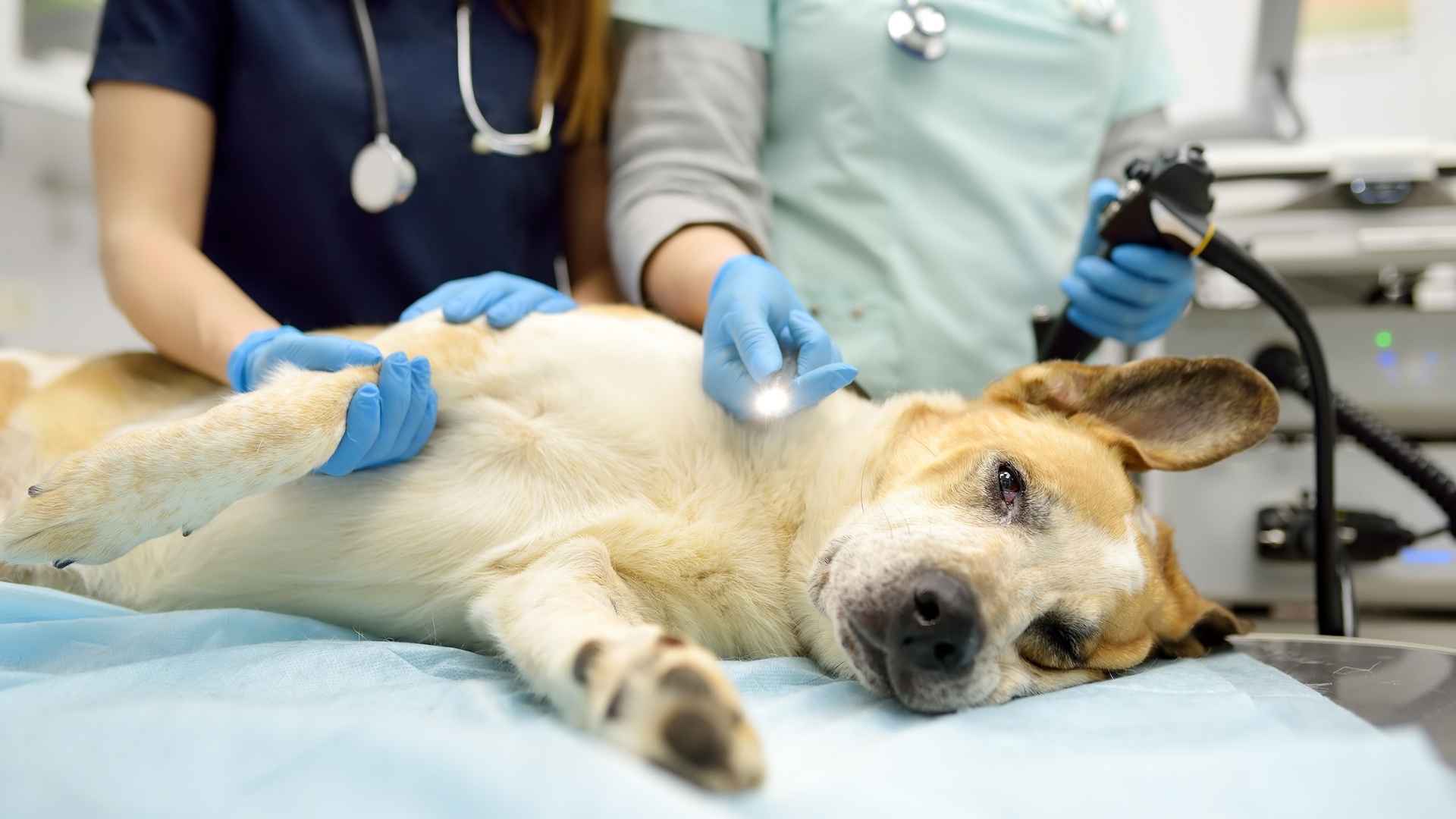Ever fallen in love with a dog, only to find out later that they come with a list of health problems longer than your grocery list? Yeah, it’s heartbreaking. Some dog breeds are more prone to health issues than others, and if you’re thinking of bringing one home, you need to know what you’re signing up for.
Certain breeds are genetically wired to struggle with specific health concerns, from breathing troubles to joint pain. And let’s be real—vet bills aren’t cheap! The good news? Knowing what to expect can help you care for your furry friend better and maybe even prevent some issues before they start.
So, if you’re curious about which breeds need extra TLC regarding their health, you’re in the right place. Let’s dive into the common health concerns that affect some of the most beloved (but high-maintenance) dog breeds out there!
Dog Breeds with Frequent Health Concerns
1. Bulldog
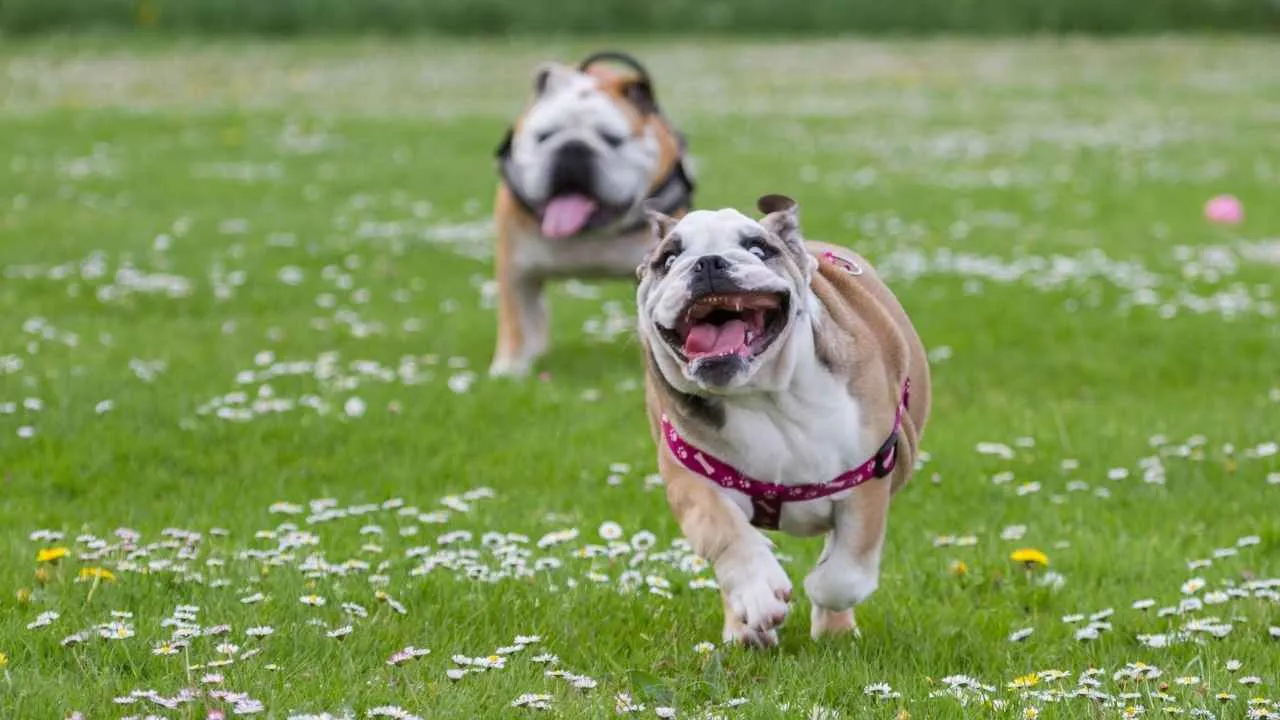
Bulldogs may have an irresistibly wrinkled face and a charmingly lazy personality, but beneath that cute exterior lies a long list of health concerns. Their signature squished face isn’t just a look—it’s a breathing nightmare. Bulldogs suffer from brachycephalic obstructive airway syndrome (BOAS), making every breath a struggle, especially in hot or humid weather.
Those adorable rolls and folds? They trap moisture, leading to skin infections and irritation if not cleaned regularly. Yeast and bacteria love warm, damp places, and a Bulldog’s wrinkles are the perfect breeding ground. If you don’t stay on top of skincare, your pup could end up with painful sores and a funky smell.
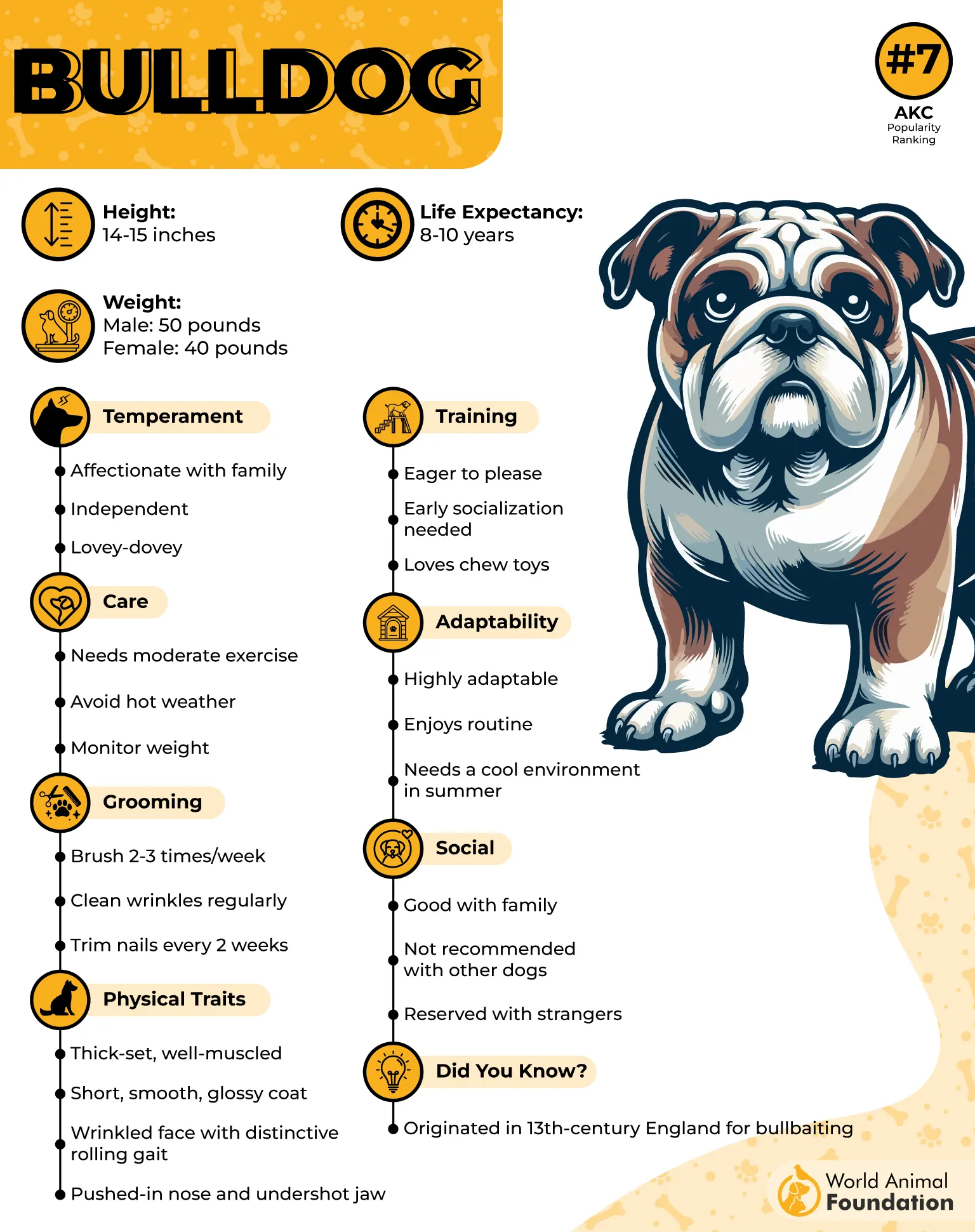
Bulldogs are also prone to hip and joint issues, thanks to their muscular build and short legs. Hip dysplasia and patellar luxation (a fancy term for dislocated kneecaps) are common, making movement difficult as they age. Regular exercise helps, but too much activity can also stress their joints—talk about a delicate balance!
Heat is another major enemy of the Bulldogs. They overheat easily because their short snouts make panting (a dog’s natural cooling system) inefficient. A Bulldog on a hot summer day is like a human wearing a winter coat in the desert—dangerous and downright uncomfortable. Air conditioning and cool water are absolute musts.
Digestive issues? Yep, Bulldogs have those too, as per PetMD. They tend to be gassy, thanks to their sensitive stomachs and tendency to gulp down food like they haven’t eaten in days. Poor digestion leads to bloating, discomfort, and yes, a home that smells like a fart factory. Choosing high-quality food and feeding smaller portions can help.
2. Pug

Pugs, much like their Bulldog cousins, struggle with breathing issues. Their short snouts make it hard to get enough air, a condition known as brachycephalic obstructive airway syndrome (BOAS). This means even mild exercise can leave them gasping, and hot weather. That’s their worst nightmare!
Those big, bulging eyes might make Pugs look extra expressive, but they’re also super delicate. Because their eyes sit so far forward, they’re prone to corneal ulcers, scratches, and even popping out (yes, really!). A simple, rough play session or an accidental bump can lead to serious eye injuries, so Pug owners have to be extra careful.
According to Britannica, Pugs are also prone to obesity, and let’s be honest—these little food lovers will eat anything in sight. Their compact bodies can’t handle extra weight, leading to joint problems, spinal issues, and breathing even harder. Keeping them active (but not overworked) and sticking to a strict diet is the best way to avoid a pudgy Pug.
Ever noticed a Pug walking with a wobbly back end? That could be Pug Dog Encephalitis (PDE), a devastating brain disease that affects only Pugs. It causes seizures, disorientation, and eventually paralysis. There’s no cure, and the cause is still a mystery, making regular vet checkups crucial for early detection.
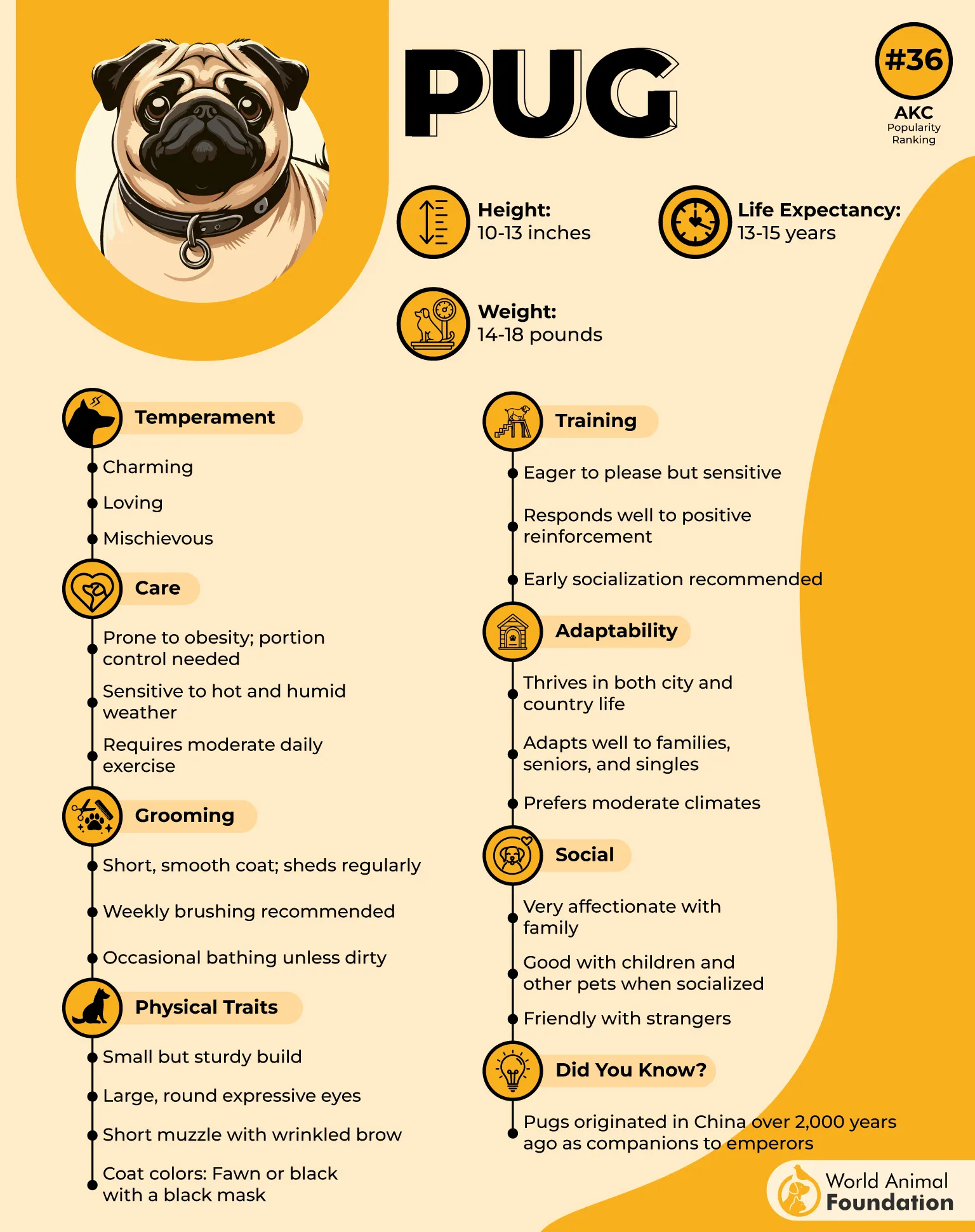
Pugs are also prone to overheating, but often don’t realize it. They’ll keep playing until they collapse, which can be dangerous. Owners must monitor them closely and keep them cool, especially in the summer. A Pug with heatstroke is an emergency!
3. German Shepherd
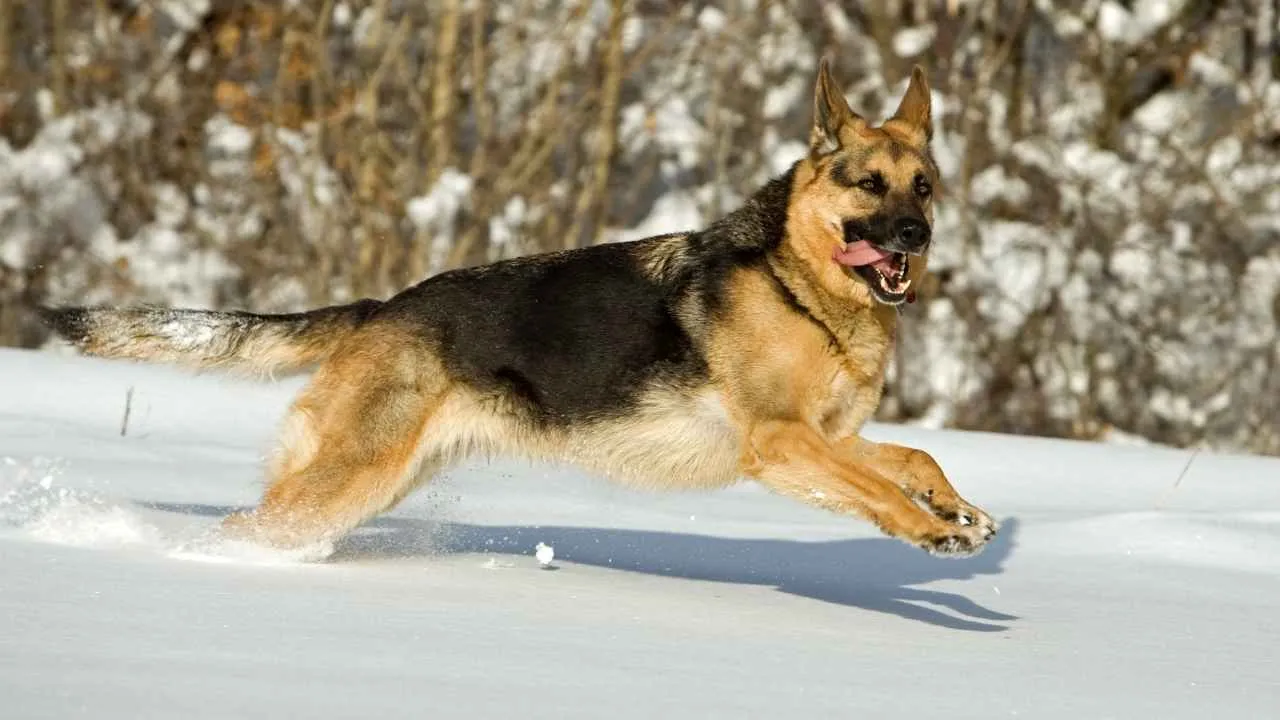
German Shepherds are the definition of loyalty and intelligence, often serving as police dogs, search-and-rescue heroes, and devoted family guardians. But beneath their strong, athletic build lies a genetic predisposition to serious health issues—ones that can cut their working years short and make their golden years painful.
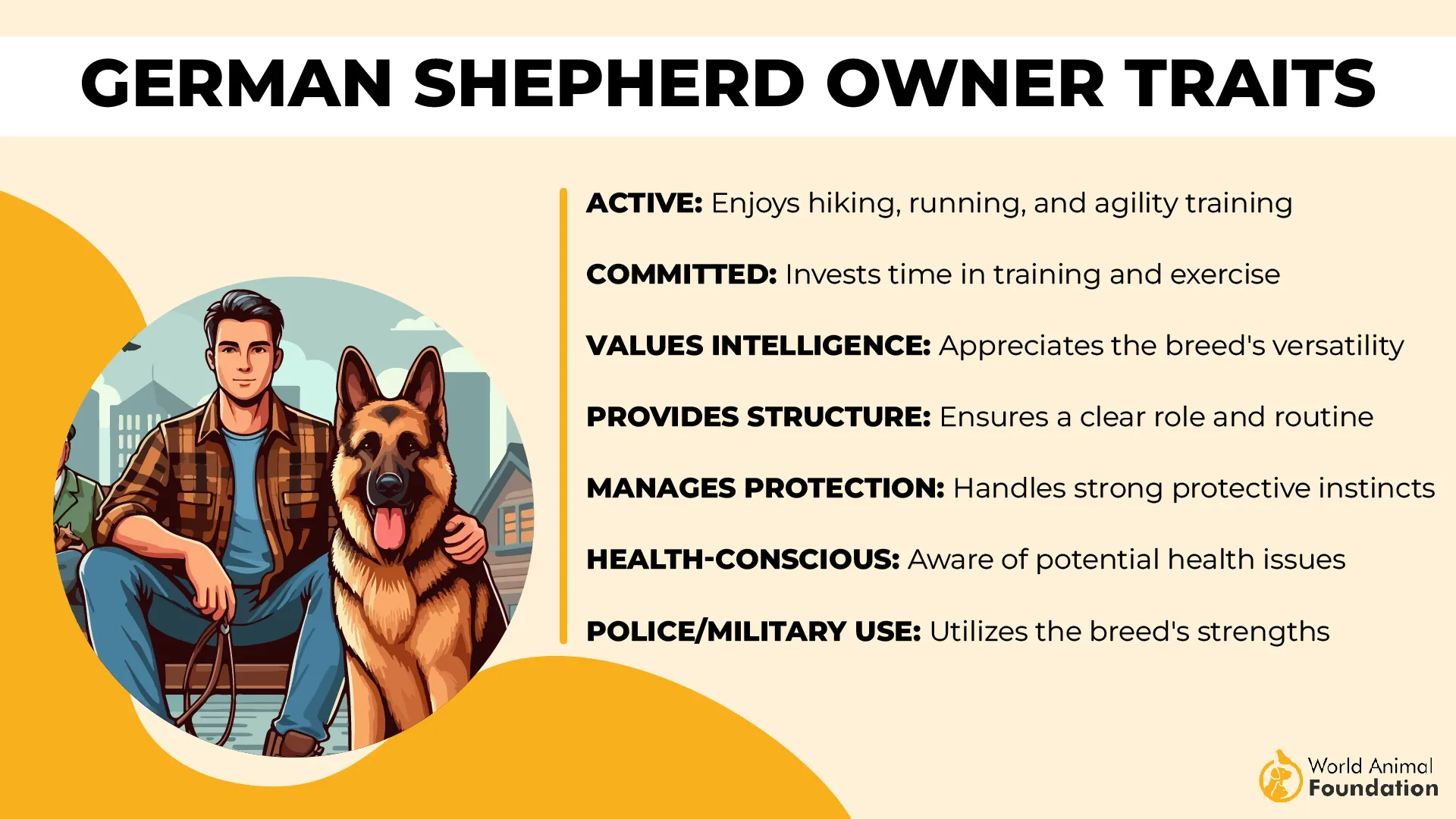
A hidden issue? Degenerative myelopathy, a devastating disease that slowly paralyzes their back legs. It starts with mild weakness and progresses until they can’t walk. The worst part? There’s no cure. Regular exercise, physical therapy, and a good diet can slow it down, but it’s a tough battle for both the dog and their owner.
Their immune system isn’t always the strongest, either. German Shepherds have a higher risk of exocrine pancreatic insufficiency (EPI), where their pancreas stops producing digestive enzymes. This leads to weight loss, chronic diarrhea, and constant hunger, no matter how much they eat. The only fix? Lifelong enzyme supplements and a carefully managed diet.
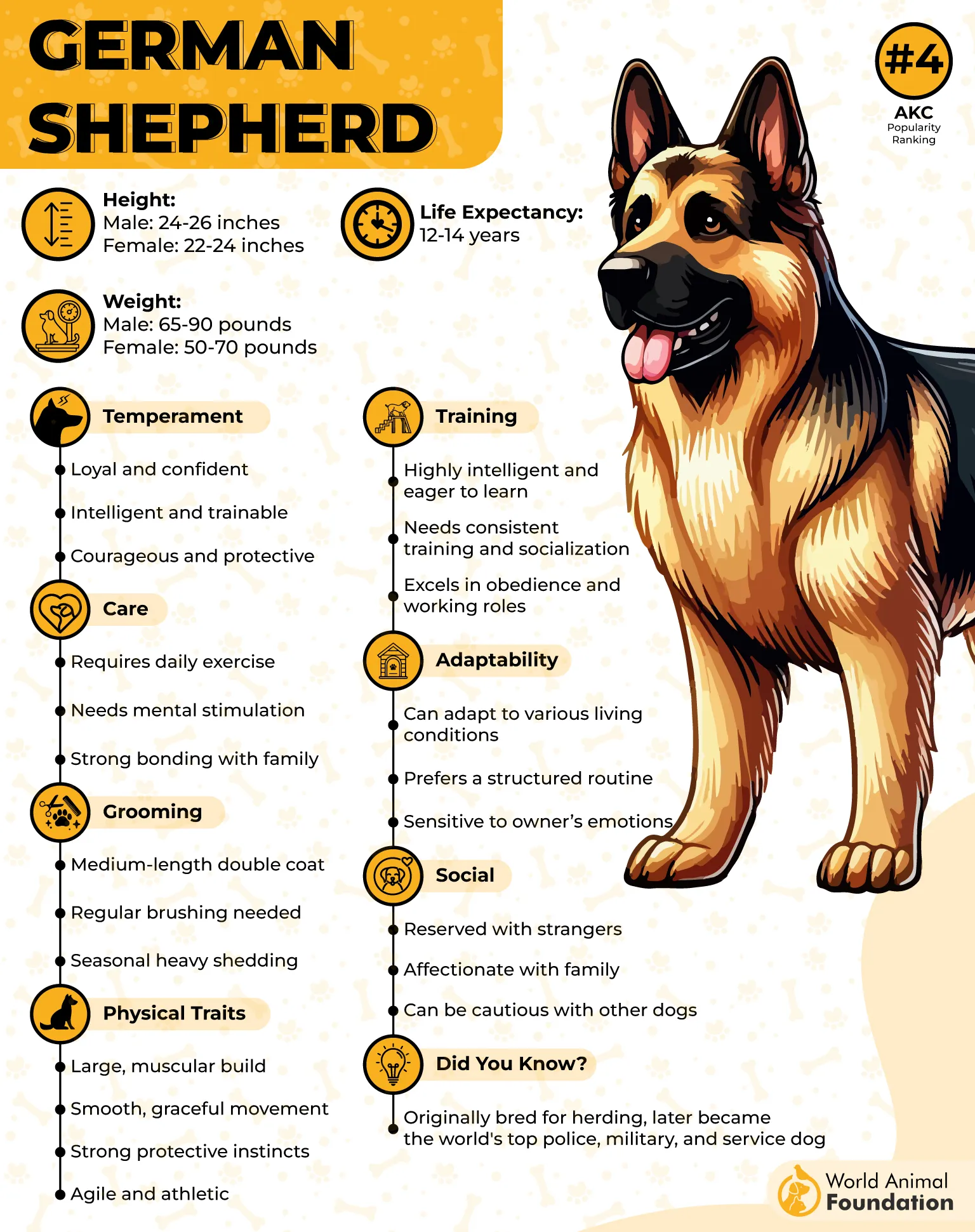
Epilepsy is another silent struggle for some German Shepherds. Seizures can appear suddenly with no clear cause. Some dogs live normal lives with medication, while others require extensive care. It’s unpredictable, making early detection and vet consultations crucial.
Even their strong hearts can be vulnerable. PetMD mentions that German Shepherds are at risk of dilated cardiomyopathy (DCM), a condition where their heart becomes enlarged and weak. This can lead to fatigue, breathing difficulties, and even sudden collapse. Regular checkups and a heart-healthy diet can help, but some cases are purely genetic.
4. Beagle

Beagles are the ultimate scent hounds—always sniffing, searching, and ready for mischief. But these little explorers face serious health challenges beneath that wagging tail and endless curiosity. Their genetics, body structure, and high-energy nature make them prone to conditions that every Beagle owner needs to watch out for.
One major issue? Obesity. Beagles love food more than they love sniffing. With their big appetites and persuasive puppy eyes, they often eat more than they should, leading to weight gain, joint strain, and even diabetes. Regular exercise and portion control are key, or you’ll end up with a Beagle that waddles instead of runs!
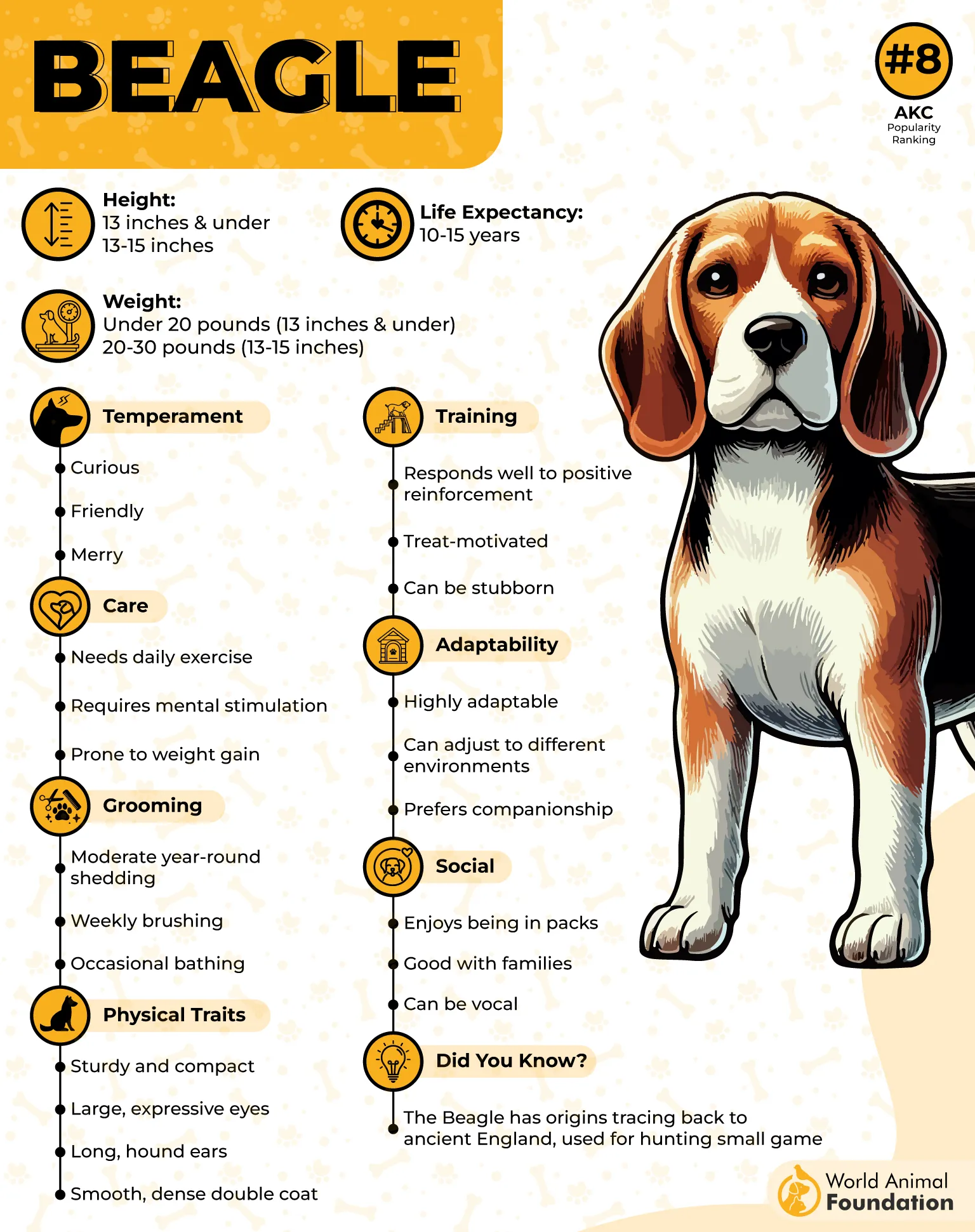
Another big concern is hypothyroidism, states Pawlicy Advisor. This condition slows their metabolism, causing weight gain, hair loss, and lethargy, which is unusual for such an active breed. A simple blood test can confirm it; lifelong medication usually controls it.
Ever heard of cherry eye? It’s a condition where a gland in the eye pops out, leaving a red, swollen mass in the corner of their eye. It looks dramatic, but is treatable with surgery. Since Beagles have weak connective tissues, they’re more prone to this than other breeds.
Bloat isn’t just a problem for big dogs—Beagles can get it, too. Their love for scarfing down food at lightning speed puts them at risk for gastric torsion, a life-threatening condition where the stomach twists. Slower feeding, eating smaller meals, and keeping them calm after eating can help prevent it.
5. Shih Tzu

Shih Tzu’s large, prominent eyes are prone to scratches, infections, and dry eye (keratoconjunctivitis sicca). Because their eyes stick out more than most breeds, a minor bump or rough play can lead to serious injuries. Regular vet checkups and keeping their face clean can help prevent painful conditions.
Then there’s luxating patella, a common joint issue in small breeds where the kneecap slips out of place. It may start with a slight limp but can lead to arthritis and chronic pain over time. Keeping them at a healthy weight and providing joint supplements can help reduce stress on their tiny legs.
Their long, silky coat may be stunning, but it’s high maintenance, as per Royal Canin. Their fur mats easily without proper grooming, leading to skin infections, painful tangles, and even hot spots. Regular brushing, trimming, and keeping their skin clean can prevent these problems, but be prepared for frequent grooming sessions!
Another sneaky issue? Dental problems. Their small mouths mean crowded teeth, leading to plaque buildup, gum disease, and early tooth loss. Daily brushing and regular dental cleanings are a must; otherwise, bad breath and painful infections can occur quickly.
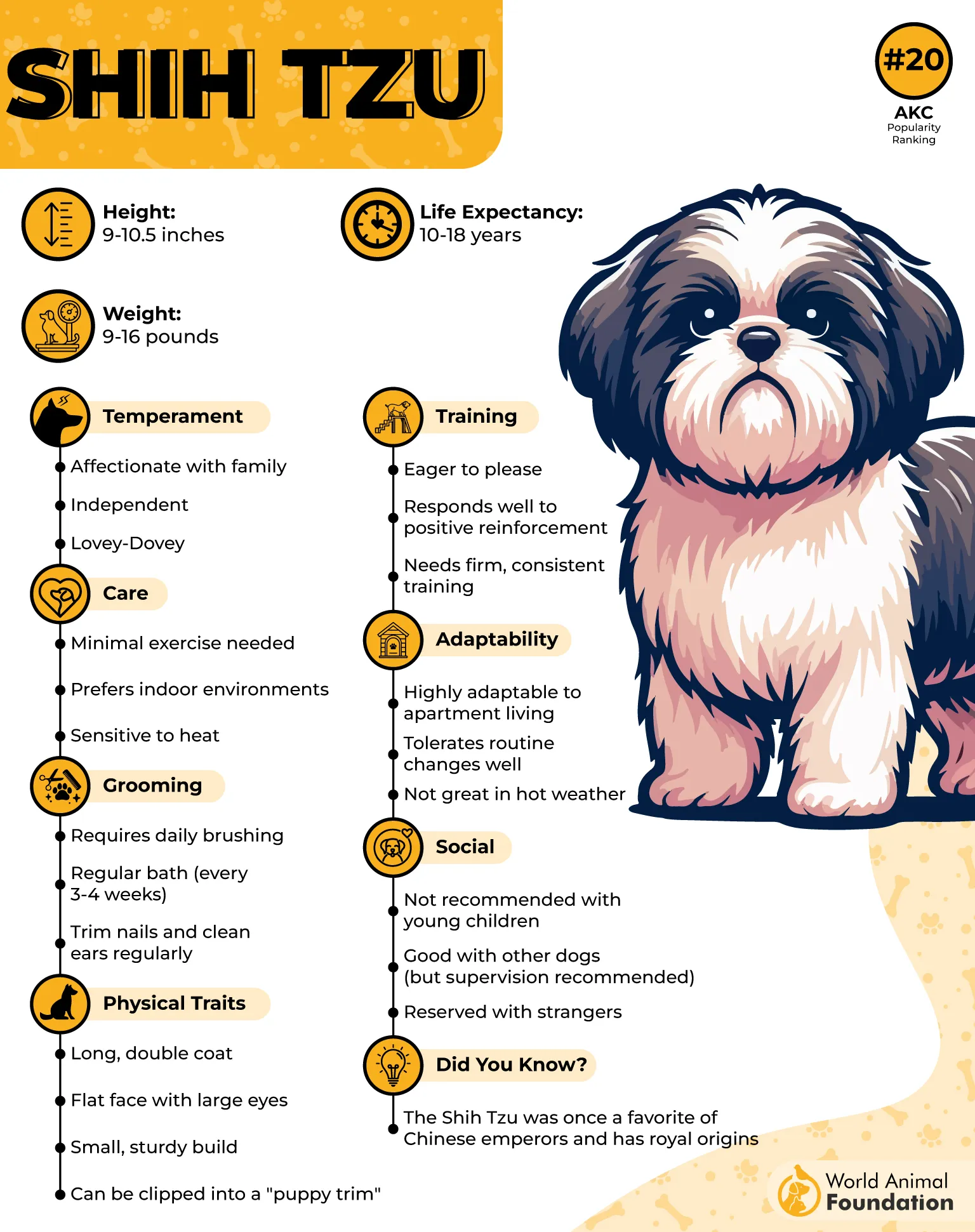
Shih Tzu also has a higher risk of intervertebral disc disease (IVDD). Their long backs and short legs put extra pressure on their spine, making them prone to slipped discs and nerve damage. Jumping off furniture or running up stairs too often can worsen things, so ramps and gentle handling are a good idea.
6. Boxer

Boxers are high-energy, playful, and incredibly loyal, but their athletic build doesn’t mean they’re invincible. Boxers are one of the most health-challenged breeds, dealing with a mix of heart conditions, cancer risks, and joint problems. Knowing what to watch out for can help keep your four-legged athlete in top shape if you have a Boxer!
One of the biggest concerns? Heart disease. Boxers are genetically prone to Boxer cardiomyopathy (ARVC), a heart condition that causes irregular heartbeats and, in severe cases, sudden collapse. Some dogs show no symptoms until it’s too late, so routine heart screenings are a must for this breed.
Then there’s cancer—a major threat to Boxers, says PetMD. They are especially prone to mast cell tumors, lymphoma, and brain tumors. If you notice lumps, sudden weight loss, or changes in behavior, don’t ignore them. Early detection can make a big difference, and regular vet checkups are essential.
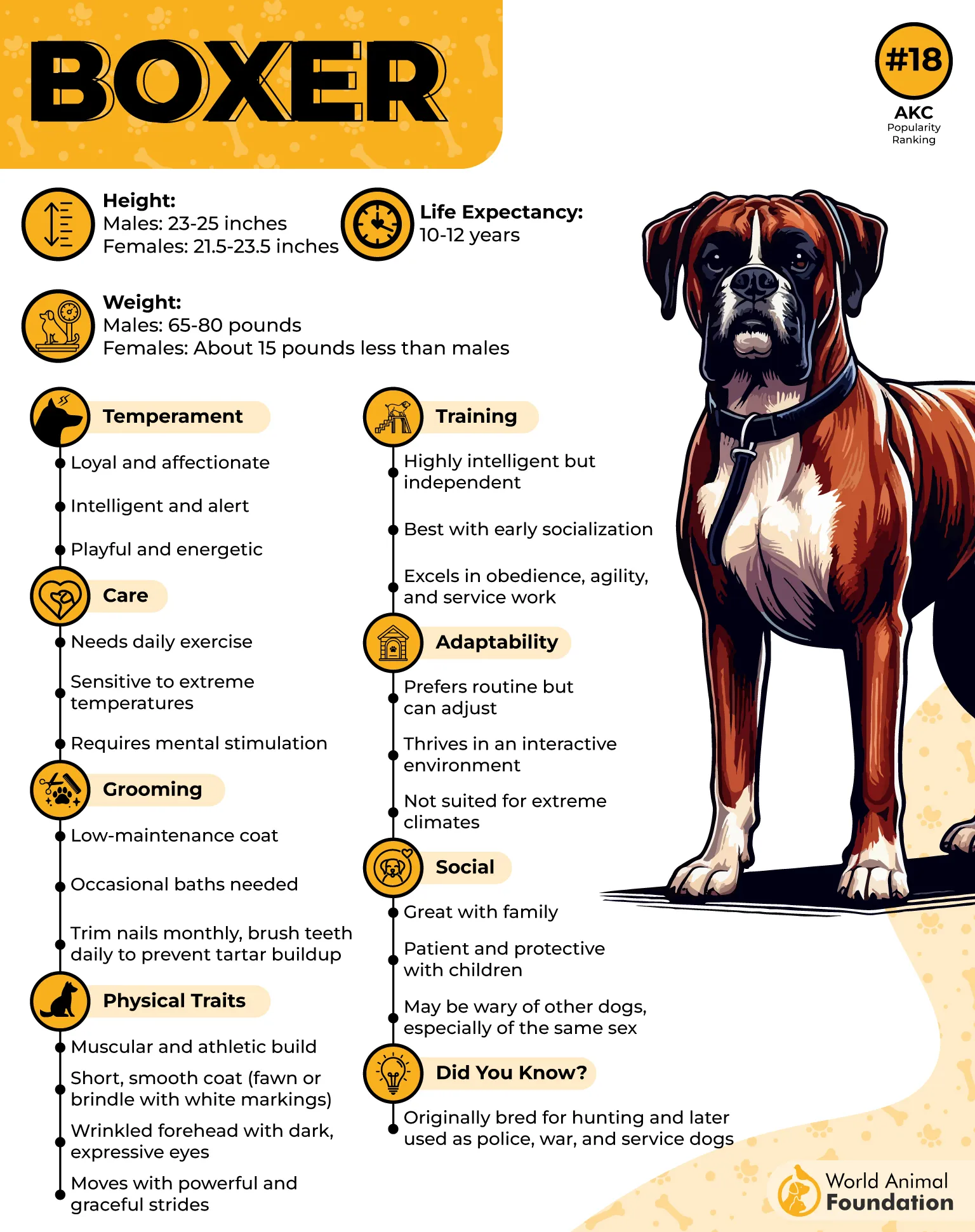
Boxers also have sensitive stomachs and can develop bloat (gastric torsion), a life-threatening condition where the stomach twists. They’re at higher risk because they love to eat fast, gulp air, and stay active. Feeding smaller meals, using slow-feeder bowls, and avoiding exercise right after meals can help prevent this deadly condition.
Boxers’ short muzzles make breathing a challenge, especially in hot weather. While they’re not as extreme as Pugs or Bulldogs, their brachycephalic features can lead to snoring, overheating, and respiratory issues. Keeping them cool, hydrated, and out of the sun is critical on hot days.
7. Dachshund

Dachshunds might be small, but huge in personality, known for their playful spirit and determined nature. However, their long bodies and short legs come with serious health risks, especially spinal issues, joint problems, and obesity-related complications. If you own a Dachshund, keeping them active—but not overdoing it—is key to their long-term health!
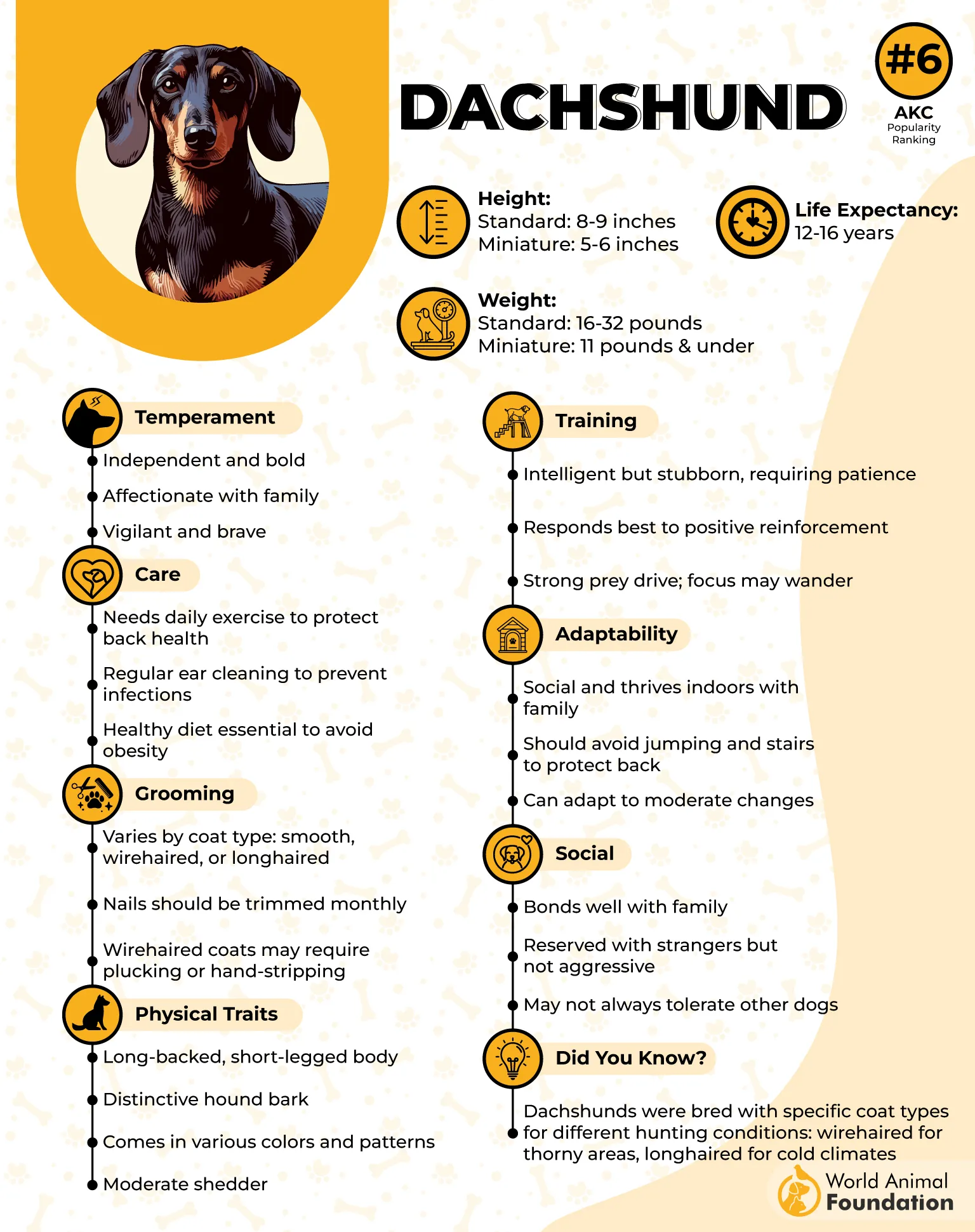
The biggest health concern? Intervertebral Disc Disease (IVDD). Their elongated spine is extremely vulnerable, making them prone to slipped or ruptured discs. Jumping off furniture, running up stairs, or rough play can easily lead to a painful injury or even paralysis. Using dog ramps, lifting them properly, and maintaining a healthy weight can significantly reduce the risk.
Another issue? Obesity. Dachshunds love food, but extra weight stresses their fragile spine and joints. Even a few extra pounds can increase their risk of back problems, arthritis, and heart disease. Portion control, high-quality food, and regular exercise (but no high jumps!) are essential.
Their stubby legs may be cute, but they also cause joint concerns. Patellar luxation and hip dysplasia are common, leading to limping, pain, and early arthritis. While they may seem eager to run and jump, too much strain on their tiny legs can cause long-term damage.
Surprisingly, this feisty breed also struggles with hormonal disorders. Cushing’s disease (causing excessive thirst and hair loss) and hypothyroidism (leading to weight gain and sluggishness) are both common in Dachshunds. A vet visit is a good idea if your pup seems lethargic, is constantly hungry, or has skin issues.
8. Yorkshire Terrier

Yorkshire Terriers, or Yorkies, are tiny but full of sass, often acting like they’re ten times their size. Their luxurious coats, bold personalities, and affectionate nature make them irresistible, but beneath all that charm, they’re prone to some serious health issues. From fragile bones to dental troubles and sensitive stomachs, these pint-sized pups need extra care to stay happy and healthy.
One major issue? Tracheal collapse. Yorkies have delicate windpipes; even a slight injury can make breathing difficult. Tracheal collapse could be the culprit if your Yorkie has a honking cough, trouble breathing, or wheezes when excited. Using a harness instead of a collar can help prevent unnecessary strain on their throat.
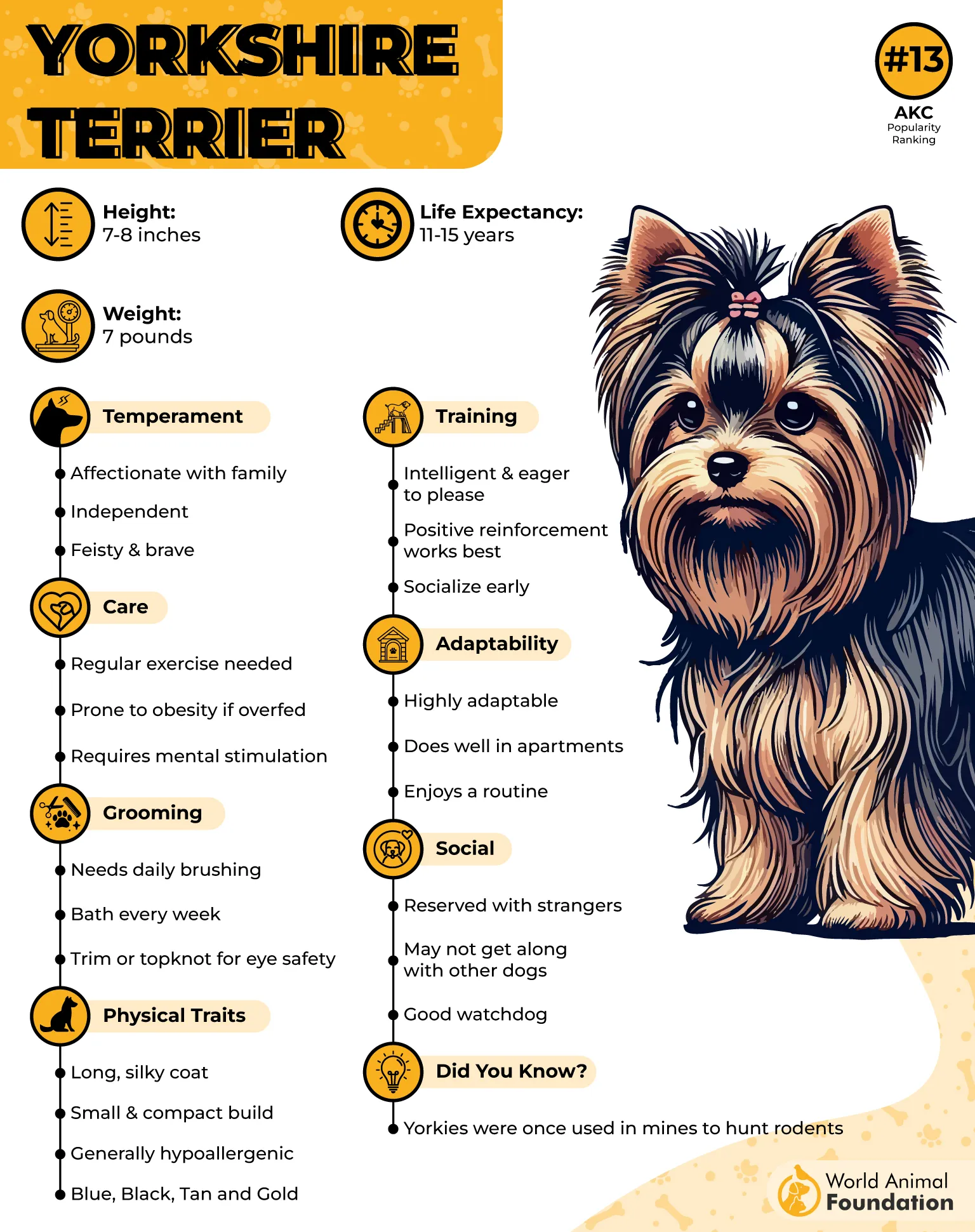
Yorkies also have tiny, fragile bones, prone to luxating patellas (loose kneecaps) and fractures. Jumping off furniture or rough play can lead to painful injuries. Providing stair ramps and supervising playtime can help protect their little legs from unnecessary damage.
These little divas also struggle with hypoglycemia (low blood sugar), especially as puppies. If a Yorkie goes too long without eating, it can become weak, dizzy, or even collapse. Feeding small, frequent meals helps prevent dangerous drops in blood sugar.
Another issue that Yorkies face? Liver shunts, as mentioned by PetMD. This condition affects how the liver processes toxins, leading to lethargy, poor growth, and digestive issues. A vet visit is crucial if your Yorkie has a sensitive stomach, seems unusually tired, or has seizures. Some cases require surgery, while others can be managed with a special diet.
9. Golden Retriever

Golden Retrievers are one of the most beloved dog breeds, known for their friendly nature, intelligence, and boundless energy. They’re the ultimate family dogs, always eager to please, but behind that happy-go-lucky personality, they’re prone to several health problems.
One of the biggest concerns? Cancer. Unfortunately, Goldens have one of the highest cancer rates among all dog breeds. Hemangiosarcoma (a blood vessel cancer) and lymphoma (a type of white blood cell cancer) are particularly common. Early detection is key, so regular vet checkups, noticing lumps, or any unusual fatigue can make a difference.
Another common issue? Hip and elbow dysplasia, says Britannica. These large, active dogs strain their joints, leading to pain, stiffness, and mobility issues as they age. Providing joint supplements, maintaining a healthy weight, and avoiding excessive jumping can help protect their joints.
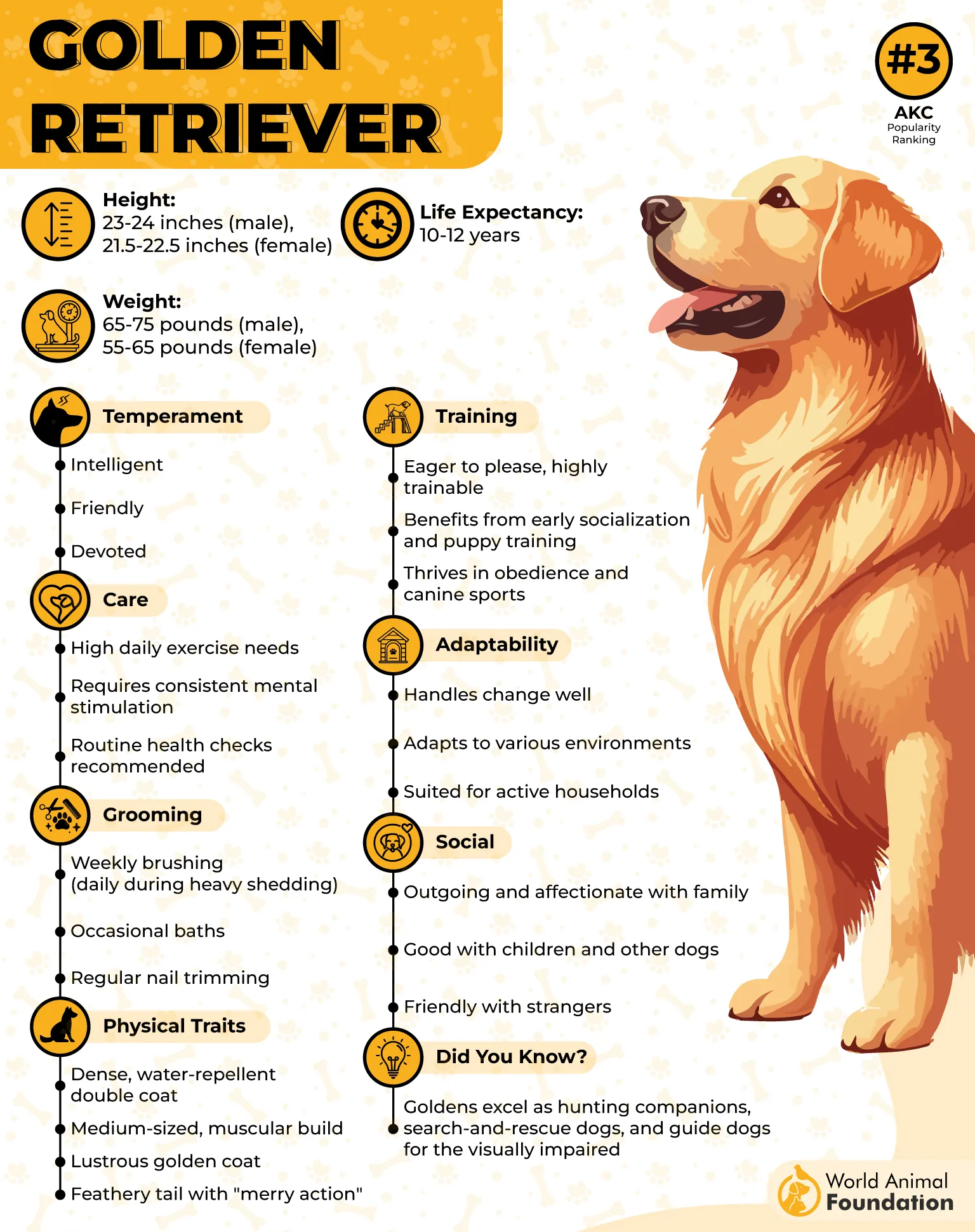
Goldens are also prone to heart conditions, especially subvalvular aortic stenosis (SAS), where blood flow from the heart is restricted. This can lead to fainting, difficulty exercising, or even sudden heart failure. Regular heart checkups and monitoring their activity levels can help detect issues early.
And then there’s bloat (gastric torsion)—a life-threatening condition where the stomach twists, trapping gas inside. Large, deep-chested breeds like Goldens are particularly at risk. Feeding multiple small meals a day, avoiding vigorous exercise after meals, and using slow-feeder bowls can help reduce the risk of bloat.
10. Poodle

Poodles are athletic, energetic, and full of personality. Whether you have a Toy, Miniature, or Standard Poodle, these dogs are known for their sharp minds and affectionate nature. However, despite their many strengths, Poodles are prone to several health problems that every owner should know about.
One of the biggest concerns? Addison’s disease. This hormonal disorder occurs when the adrenal glands don’t produce enough cortisol, leading to weakness, vomiting, low energy, and even sudden collapse. Because symptoms can be vague, it’s often misdiagnosed. A vet visit is a must if your Poodle seems lethargic, shaky, or uninterested in food.
Poodles are also at risk for bloat (gastric torsion), especially the Standard variety. This life-threatening condition happens when the stomach twists, trapping gas inside. It can cause sudden bloating, restlessness, drooling, and signs of pain. To reduce the risk, avoid feeding large meals all at once.
Poodles are brainy dogs, but their sharp minds come with a downside—they are prone to epilepsy. This neurological disorder causes seizures, muscle twitching, and disorientation. While epilepsy can’t always be cured, medication can help manage symptoms and give your Poodle a normal life.
Their keen eyesight is another weak spot. Poodles are prone to progressive retinal atrophy (PRA), which causes gradual blindness. If your Poodle hesitates in dim lighting or bumps into furniture, it’s time for an eye checkup. There’s no cure, but early detection and home adjustments can help them adapt.
Conclusion
Many dog breeds face breed-related health problems, with some popular dog breeds being at a higher risk due to genetics. Purebred dogs often experience common health issues, including hip dysplasia, elbow dysplasia, and joint problems, which are prevalent in large dog breeds like German Shepherds and Labrador Retrievers. Additionally, small dogs like Yorkshire Terriers and Cavalier King Charles Spaniels are prone to mitral valve disease, progressive retinal atrophy, and skin allergies, which require regular vet visits for early detection and management.
Other dog health issues include autoimmune disorders, genetic diseases, skin infections, and floppy ears, which can lead to ear infections—a common issue for breeds like Cocker Spaniels. Common health problems such as urinary tract infections, kidney disease, mast cell tumors, and intervertebral disc disease can also impact a dog’s well-being, especially in senior dogs. Maintaining a healthy weight through a balanced diet, proper nutrition, and regular exercise is crucial for reducing common illnesses. Pet owners should prioritize preventing ear infections, monitoring their dog’s teeth, and ensuring proper care to prevent weight loss.
While mixed-breed dogs tend to have fewer breed-specific concerns, they can still develop health conditions like other dog breeds. Whether a dog belongs to a brachycephalic breed, a large dog breed, or a small dog, ensuring a healthy life requires a commitment to regular exercise, proper care, and regular vet visits. Dog owners can help their pets live longer, healthier lives by addressing common breeds with common health concerns.


